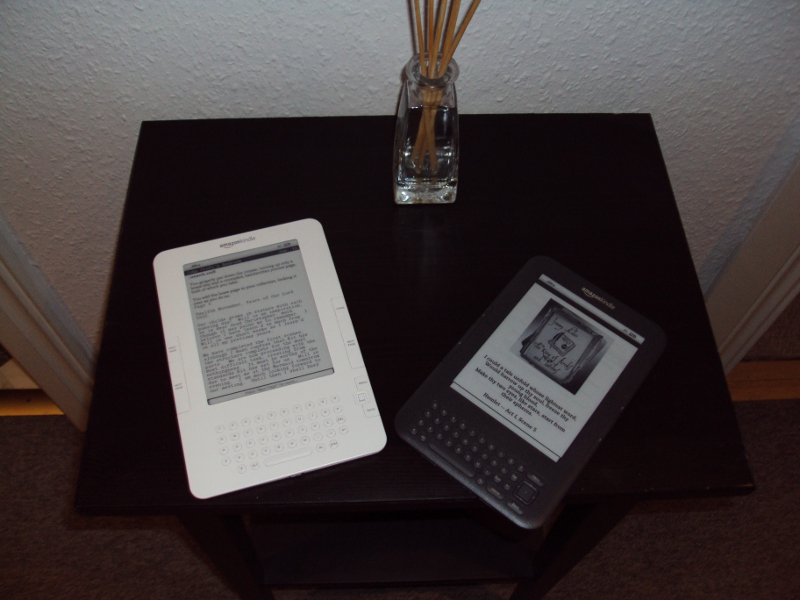I mentioned last time around that the original Oregon Trail was written on an HP-2100 series minicomputer. That’s a pretty interesting topic in itself.
HP’s first computer line, the 2100 series could be equipped with a number of possible operating systems. One of the most common, and the one under which The Oregon Trail was written, was called HP Time-Shared BASIC. This system was unique in its time, and perhaps even visionary. Rather than placing the user in the command-line driven environment typical of virtually all other OSs of the period, Time-Shared BASIC, true to its name, dropped the user after login into an interactive BASIC environment. Not only could she write programs here using BASIC, but all of her other immediate interactions with the system — loading and saving files, etc. — were also done using BASIC statements.
This was the design concept later used by many of the 8-bit generation of personal computers, as anyone who ever typed “LOAD ‘*’,8,1” to start a game on a Commodore 64 can attest. Following the norms of the time, even the original IBM PC dumped the user into a little used and seldom remembered BASIC environment if it didn’t find a DOS disk to boot at power-on. I’d been curious for years how we got from the command-line driven environments typical of most institutional computing to the interactive BASICs of these machines; now I think I have an idea.
Time-Shared BASIC represented a more welcoming environment for working and programming than was typical of the time, and this fact combined with the relatively low cost and easy maintainability of the HP-2100 line made these machines favorites of universities and even high schools. HP seems to have put considerable effort into designing and marketing the HP-2100 as a more user-friendly, accessible sort of machine. This manual is particularly interesting, being an introduction to BASIC programming pitched to the complete novice. It’s actually really well done, managing to walk the fine line of being friendly and accessible without falling into condescension. In light of all this, then, it’s not at all surprising that an HP-2100 would have found its way to Carleton College.
There were quite a lot of games and educational programs written in Time-Shared BASIC, and some of these have ended up on the Internet in the form of an unorganized dump to a huge tape image. So, I decided to try to bring up an emulated version of Time-Shared BASIC on my computer and to look through this mass to see if there might be a copy of the original The Oregon Trail in there somewhere. Well, it sounded like a good idea at the time, anyway…
You see, while there is an HP-2100 emulator available thanks to the amazing efforts of The Computer History Simulation Project, Time-Shared BASIC was a pretty complicated configuration. It was in fact TWO HP-2100s, one serving as a sort of gateway to users who connected via remote terminals and the other hosting the core of the OS itself. So, emulating the thing means running two separate HP-2100 emulators, loading the appropriate software onto each, and linking them together via sockets. Finally, one opens a THIRD window on one’s PC to telnet into the system via the loopback address. I never would have gotten anywhere close to a working setup if it hadn’t been for a Yahoo group dedicated to the platform, who host in their files section an emulator setup that almost worked right out of the box. I won’t bore you with the details of my struggles to get from almost to completely working; suffice to say that I finally got my own little Time-Shared BASIC system up and running.
And so I started going through the tape dump. This was almost 6MB of data, a large quantity indeed for a collection of BASIC programs often only a few kilobytes in length. Alas, though, no joy on The Oregon Trail.
But what I did find was pretty darn interesting, and more than justified the time it took to get to this point. Here were literally hundreds of BASIC programs: games, educational programs dealing with every subject, practical scientific and mathematical tools, etc. I even found what appears to be the original version of the old Star Trek game. There was obviously quite a thriving culture of program development and trading on this system from the late 1960s to the late 1970s. That’s perhaps not so remarkable in itself. What is, though, is that these programs were being written and used not by a priesthood of professionals as in the world of the IBM mainframe or a collection of focused hackers and researchers as in the world of the DEC PDP line, but rather by everyday students and educators. This gives their work a very different character. And if this sampling of their work is anything to go by, these people were very, very interested in games.
This mother lode deserves more attention, and I’m going to try to give it some and perhaps post a bit more about it in the future. (In particular, I want to see if I can find a version of the Hamurabi game Jason Dyer mentioned in a comment to the first post in this series.) But before I do that I’ll get back to The Oregon Trail proper next time around.










